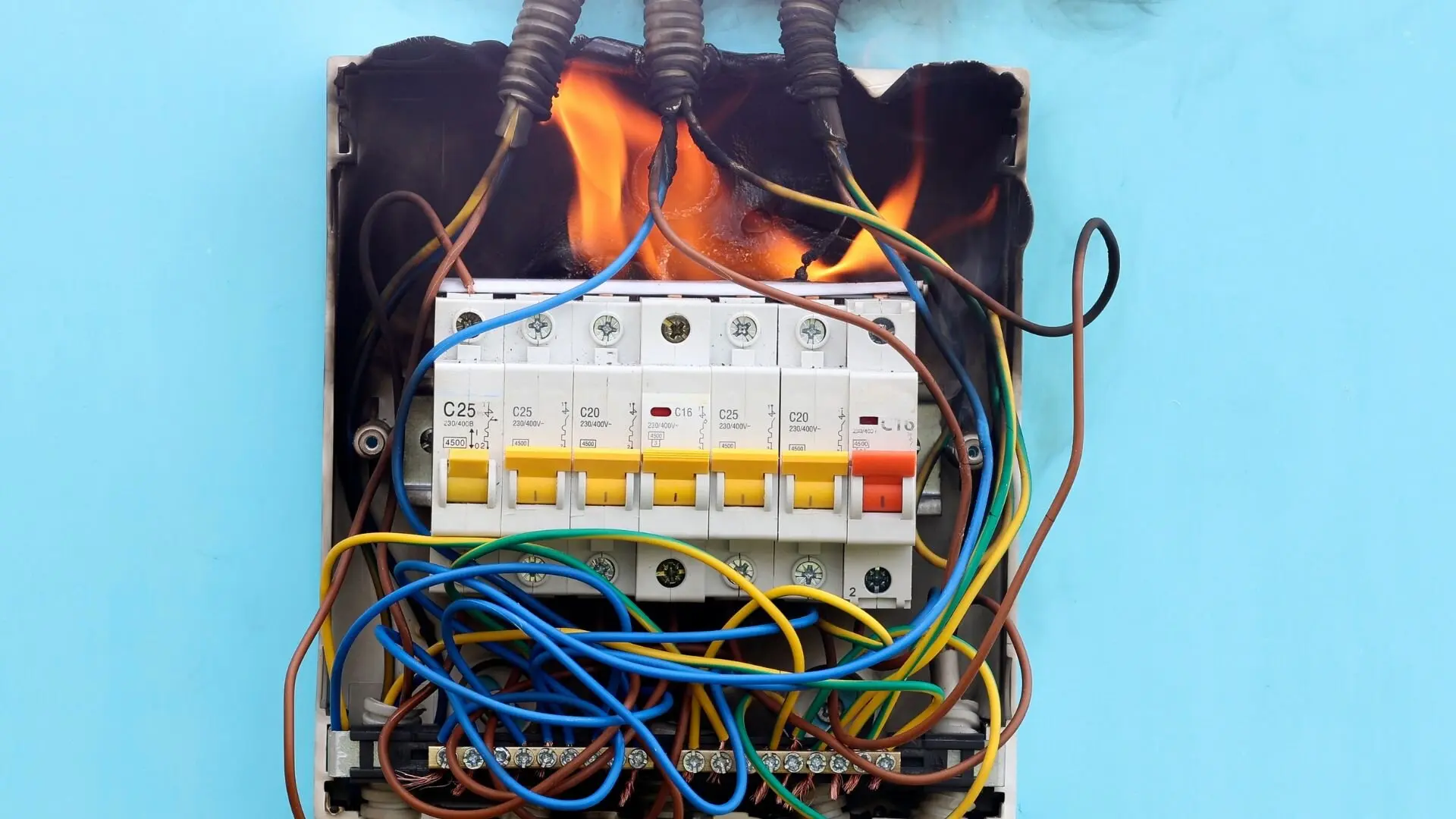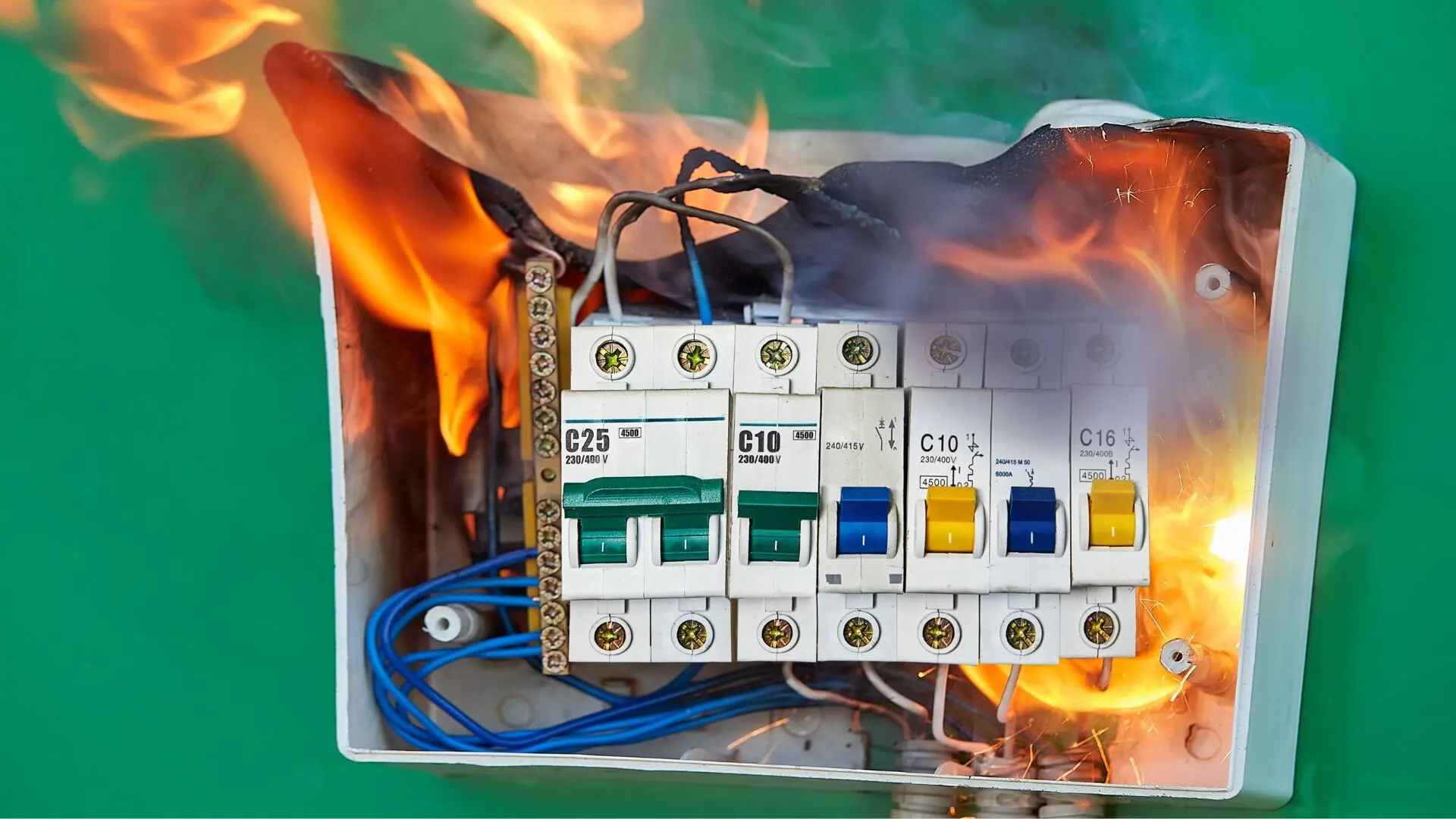
Get your free Melbourne Electrician quote today!
Our team of Melbourne Electricians is here to help you with any questions or concerns you may have. We’re committed to providing you with the best possible service and support.
Safeguard your Australian home against electrical fires with our comprehensive guide. Discover common causes, prevention tips, and safety measures to protect your family and property from potential electrical fires.
Electrical fires are a significant risk to homes all over Australia. According to Fire and Rescue NSW , residential electrical fires happen consistently each year, highlighting the vital role of fire safety. From Melbourne’s bustling streets to Perth’s tranquil suburbs, it’s everyone’s duty to safeguard our homes from such dangers.
This guide lays out crucial steps and strategies specifically for Australian households to lessen the threat of electrical fires. By understanding the risks and putting prevention measures in place, we can protect our peace of mind and our families’ safety. Let’s work together to keep our homes secure from electrical mishaps.
What Are The Common Causes Of Electrical Fires?
Spotting potential hazards is essential when it comes to preventing electrical fires. Our Aussie homes, much like those worldwide, depend hugely on electricity. But if we’re not careful, regular household items could turn into fire hazards. Let’s dive into common culprits and figure out how they add to fire risks.

Outdated and Faulty Wiring: A Hidden Threat
Faulty wiring is one of the leading causes of electrical fires . It’s the silent danger that lurks behind walls, often going unnoticed until it’s too late. Older Australian homes with wiring that hasn’t been updated to meet current standards pose a significant risk.
If you notice frequent fuse blowouts, circuit breakers tripping, discoloured outlets, or a constant burning smell, your wiring might be faulty. Getting a licensed electrician to regularly check things out can catch and fix these problems before they grow bigger.
The Risky Business of Malfunctioning Appliances
Malfunctioning appliances are another major contributor to electrical fires. When appliances age, their internal components can degrade, leading to overheating or short circuits. Kitchen appliances such as ovens, microwaves, and toasters are mainly used and can become dangerous if malfunctioning . Continuously monitor the performance of your appliances, and if they show any signs of malfunction, have them repaired or replaced promptly.
Extension Cords and Power Strips:
While extension cords and power strips offer convenience by increasing the number of available electrical outlets, they can also lead to fire risks if misused. Connecting multiple high-energy appliances to a single extension can cause overheating and possibly ignite a fire.
Be mindful about using these accessories; avoid daisy-chaining them. Remember to disconnect them when they’re not in use, and always opt for cords compliant with Australian safety standards.
The Danger of Frayed Cords and Compromised Insulation
Frayed cords can quickly become one of the causes of electrical fires. Regular wear and tear, or running cords under rugs or furniture, can damage the insulation, exposing the wires. This poses a risk of electric shock and significantly increases the chances of an electrical fire. It’s essential to routinely check the condition of all cords and replace any that show signs of damage.
Overloaded Electrical Outlets
Overloading electrical outlets is a common mistake with dangerous consequences . Plugging too many devices, especially those that draw a lot of power, into one outlet can overload the circuit. This can lead to overheating and potentially start a fire. To prevent this, spread your electrical devices across multiple circuits and consider using high-quality power boards with overload protection.
How Can You Prevent Electrical Fires?

Step 1: Regular Inspection and Maintenance
Regularly examine large and small appliances for signs of wear . Check for damaged cords, plugs, and loose connections. If you identify any faults, do not use the appliance until it has been professionally repaired or replaced. These signs are a serious potential fire hazard.
Older appliances may not have the same safety features as newer models and are more susceptible to fires. It is essential to inspect these appliances frequently and consider replacing them if they do not meet current safety standards. Also, ensure you do not have too many appliances plugged into a single power board or extension cord, as this overload can cause house fires.
Step 2: Enhance Electrical System Safety
Engage a professional electrician to assess your home’s electrical system. This professional can identify and rectify issues common in older homes, such as outdated wiring or insufficient capacity.
Install Surge Protectors and Circuit Breakers
Use surge protectors to protect your electronics from voltage spikes that can cause electrical fires . Additionally, ensure your home has a suitably rated circuit breaker system. This is crucial for managing your circuit’s capacity and preventing a single circuit from being overloaded, which can lead to overheating and potential fires.
Step 3: Implement Protective Devices
Utilise Ground Fault Circuit Interrupters (GFCIs)
Ground fault circuit interrupters should be installed where electrical circuits might accidentally contact water. GFCIs quickly cut off power if an imbalance is detected, preventing shocks and fires .
Whenever possible, plug appliances directly into wall outlets rather than using extension cords, which can be overtaxed and lead to fires.
Step 4: Be Prepared for Emergencies
Keep Fire Extinguishers Accessible
Ensure you have a suitable fire extinguisher readily accessible in your home, and familiarise yourself with its use. Fire extinguishers can be a first line of defence in a small electrical fire , but remember to call emergency services immediately if the fire is not quickly contained.
Step 5: Think Ahead
Keep electrical cords away from flammable materials, and never run them under rugs where damage can go unnoticed. Electric space heaters should be used cautiously—keep them away from combustible materials and never leave them unattended.
Remember that smoke alarms and smoke detectors are your first line of personal safety, providing early warning in case of fire . Ensure they are maintained and tested regularly.
Secure Your Home And Stay Safe
Preventing electrical fires falls on every homeowner. By keeping up with regular home checks, following safety protocols, and calling in licensed professionals when needed, you can ensure a safe haven for your family and property. Don’t wait for a warning sign; act now to safeguard against the potentially devastating effects of fires.
Maintaining electrical safety is an ongoing journey, not a destination. Stay informed, stay vigilant, and most importantly, stay safe .
Melbourne residents looking to ensure their home’s electrical safety can count on WP Electrical. Our experienced team of licensed emergency electricians provides comprehensive services designed to shield your home from electrical hazards. Reach out to WP Electrical today and take an important step toward safeguarding your home and loved ones. Contact WP Electrical in Melbourne for a safer future.
Electrical Fire FAQs

What common signs indicate potential electrical fire risks in my home?
Key indicators of potential electrical fire risks include flickering lights , discoloured power outlets, frequent circuit breaker trips, and the smell of burning from electrical appliances. Additionally, watch out for frayed electrical cords, damaged electrical components, or faulty outlets, as these can all signify an electrical issue that needs attention.
How often should I have my home’s electrical system inspected?
It is advisable to have your electrical system inspected by a licensed electrician at least once every ten years for an average home and more frequently for homes over 25 years old or if you notice any signs of potential electrical problems.
Regular checks can help identify and correct issues, such as outdated electrical wires or damaged components, before they cause an electrical fire.
Can surge protectors prevent electrical fires, and if so, how?
Yes, surge protectors can prevent electrical fires by guarding against voltage spikes, which can damage electrical appliances and potentially cause fires. These devices cut off the power when they detect an overload, preventing the overheating of electrical wires and appliances. Using a surge protector that meets Australian safety standards and ensures it is not overloaded is essential.
What safety measures can I take with my electrical appliances to reduce the risk of an electrical fire?
To reduce the risk of an electrical fire, follow these safety measures: regularly inspect your electrical appliances for wear and tear, replace any frayed electrical cords immediately, avoid overloading power boards, and use appliances and cords as per the manufacturer’s instructions.
Also, consider unplugging appliances when not in use and avoid running cords under carpets or furniture where damage can go unnoticed.
Published by: Pascal Harb17 October 2025